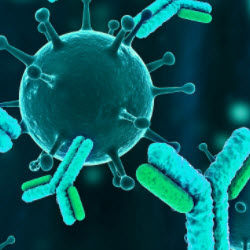 When developing new quantitative assays for Biotherapeutics, every biologic requires a specific sample prep strategy, which includes sourcing reagents and research protocols. However, as every bioanalytical lab knows all too well, it can also take up to two months to develop an optimized and robust LC-MS assay. For this reason, researchers understandably want an easier way to develop highly sensitive and specific assays for biotherapeutics and biosimilars to accelerate sample turnaround time.Read Technical Note >
When developing new quantitative assays for Biotherapeutics, every biologic requires a specific sample prep strategy, which includes sourcing reagents and research protocols. However, as every bioanalytical lab knows all too well, it can also take up to two months to develop an optimized and robust LC-MS assay. For this reason, researchers understandably want an easier way to develop highly sensitive and specific assays for biotherapeutics and biosimilars to accelerate sample turnaround time.Read Technical Note >
In the technical note, Pharmacokinetic Analysis of the mAb Adalimumab by ELISA and Hybrid LBA-LC-MS: A Comparison Study, featuring the BioBA solution, researchers set out to create a robust and sensitive quantitative assay for the analysis of adalimumab biotherapeutic. Adalimumab, an immunosuppressive drug which can treat arthritis, plaque psoriasis, ankylosing spondylitis, Crohn’s disease, and ulcerative colitis, became the first human mAb to be approved by the US Food and Drug Administration (FDA) in 20021. Just last year (2016), when the adalimumab US patent expired, the FDA approved amjevita as a biosimilar to adalimumab (Humira)2. Meanwhile, in India, further, biosimilars came to market all at a lower cost than their originator3.
Therefore, as the demand for cheaper biotherapeutics drives more research labs to develop the next biosimilar to drugs like adalimumab, alternative options to traditional ELISA assays must be explored. Although the cost per sample for ELISA assays are low, researchers point out that choosing a hybrid LBA includes the following benefits:
- Advanced Selectivity
- Broad linear dynamic range for accurate quantitation which reduces sample dilution
- Ability to multiplex detection of multiple analytes in a single injection
- Quick method development turnaround time afforded by a generic method
Method Details
The MRM analysis was performed on a SCIEX QTRAP 6500® system equipped with an IonDrive™ Turbo V source. MultiQuant™ software was used for peak integration, calibration, and calculation of unknown sample and QC concentrations. Separation of the signature peptides of the digested samples was performed on a Shimadzu Prominence system using a Phenomenex 2.6 µm, Kinetex C18 Column, (50 x 3.0 mm).
The Take-Away
The BioBA Sample Prep Kit is used to prep samples for LC-MS analysis, and then the adalimumab vMethod is the lab-tested and verified LC-MS quantitation assay parameters. Together they reduce the time needed for assay development for these common biosimilar therapeutics. In the application note, researchers turned to the BioBA sample preparation kit which includes ready-to-use reagents, consumables, and detailed protocol for every step of the sample prep process. In conjunction with the sample preparation kit, the lab-tested, and verified LC-MS vMethod for adalimumab was utilized to expedite assay development. Other available vMethods include glucagon, infliximab, trastuzumab, and insulin glargine, which would be beneficial to many labs performing biosimilar quantitation studies who need to get up and running quickly with a pre-optimized assay.
In summary, the BioBA sample preparation kit provides ready-to-use reagents and protocols for generalized immunoaffinity enrichment of monoclonal antibody therapeutics. The lab-tested vMethods for common biotherapeutics, such as adalimumab, allow for fast assay implementation in the lab, thus, allowing bioanalytical scientists to easily benefit from the advantages of hybrid LC-MS/MS assays without the need for extensive method development and optimization.
- http://www.centerwatch.com/drug-information/fda-approved-drugs/drug/814/humira-adalimumab
- https://www.fda.gov/newsevents/newsroom/pressannouncements/ucm522243.htm
- http://www.reuters.com/article/us-cadila-health-humira-india-idUSKBN0JN0X820141209






 Contact Support
Contact Support
0 Comments